
Spiritual Esoteric Place Buddha’s Wheel of Life
Our World in the Wheel of Life A social critique inspired by Buddhist cosmology By Curtis White, Illustrations by BloodBros Summer 2020 Given the threats of environmental collapse, surging white nationalism, militarism, and heedless corporate capitalism, it is understandable if we think that our moment holds an ultimacy. These threats are real.

Tibetan Buddhism and Culture The Wheel of The Existence
The Wheel of Life illustrates in a popular way the essence of the Buddhist teachings, the Four Truths: the existence of earthly suffering, its origin and cause, the ending or prevention of misery and the practice path to liberation from suffering.
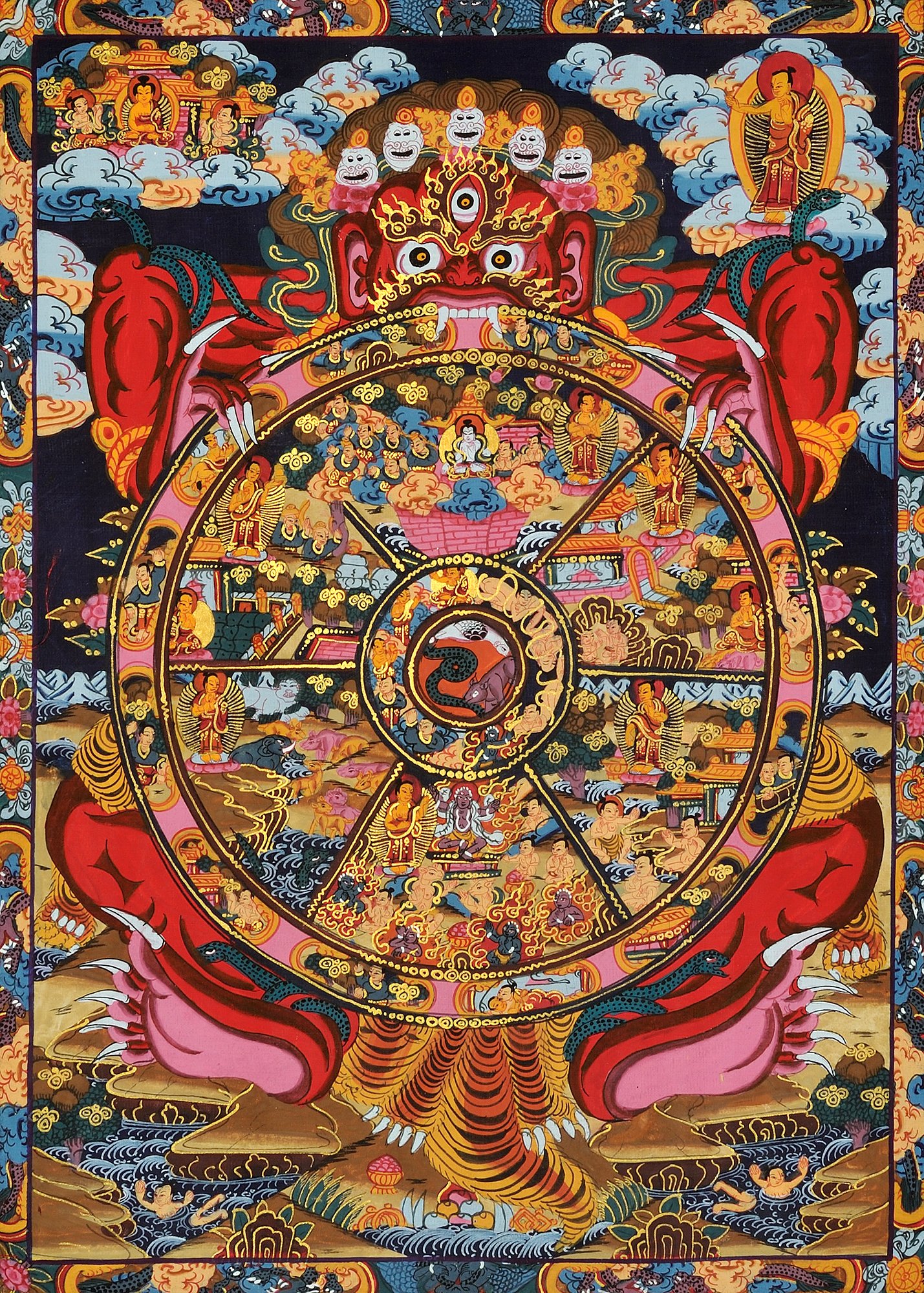
Tibetan Buddhist Wheel of Life
The wheel of life (Skt. bhavacakra; P. bhavacakka; T. srid pa'i 'khor lo སྲིད་པའི་འཁོར་ལོ་) is a symbolic representation of cyclic existence ( samsara) found on the outside walls of Tibetan Buddhist temples and monasteries in the Indo-Tibetan region.
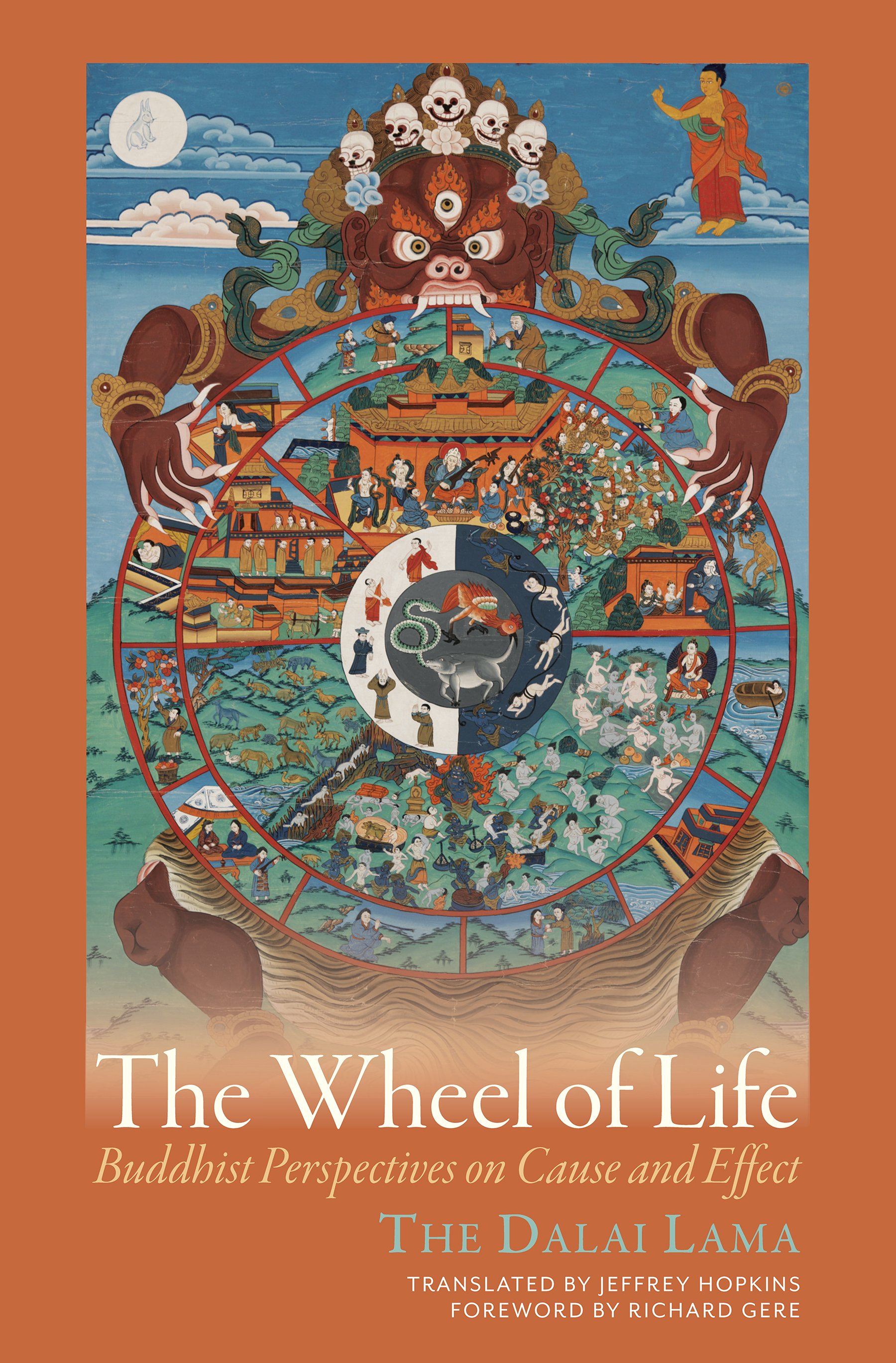
The Wheel of Life The Wisdom Experience
The dharma wheel, or dharmachakra in Sanskrit, is one of the oldest symbols of Buddhism. Around the globe, it is used to represent Buddhism in the same way that a cross represents Christianity or a Star of David represents Judaism. It is also one of the Eight Auspicious Symbols of Buddhism.

The Buddhist Wheel Of Life Samye Institute
The Wheel of Life (called the Bhavachakra in Sanskrit) represents the cycle of birth and rebirth and existence in samsara . This gallery looks at different parts of the Wheel and explains what they mean. The main sections are the hub and the six "pie wedges" depicting the Six Realms.

The Wheel of Life A Graphical Explanation r/Buddhism
The wheel of life, also known as The Bhavachakra, is a symbolic representation of the cycle of existence that Buddhists believe in. Buddhists believe in the continuous cycle of birth, life, death. They believe that you can only be liberated from this cycle of rebirth when enlightenment is reached.

Pin by Annapurna on Buddhism New Kadampa Tradition Wheel of life
Buddhism by country Religion portal v t e The bhavacakra ( Sanskrit: भवचक्र; Pāli: bhavacakka; Tibetan: སྲིད་པའི་འཁོར་ལོ, Wylie: srid pa'i 'khor lo) or wheel of life is a visual teaching aid, symbolically representing saṃsāra (or cyclic existence).

Tibetan Buddhist Wheel of Life, also known as The Wheel of
The Wheel of Life illustrates in a popular way the essence of the Buddhist teachings, the Four Truths: the existence of earthly suffering, its origin and cause, the ending or prevention of misery and the practice path to liberation from suffering.
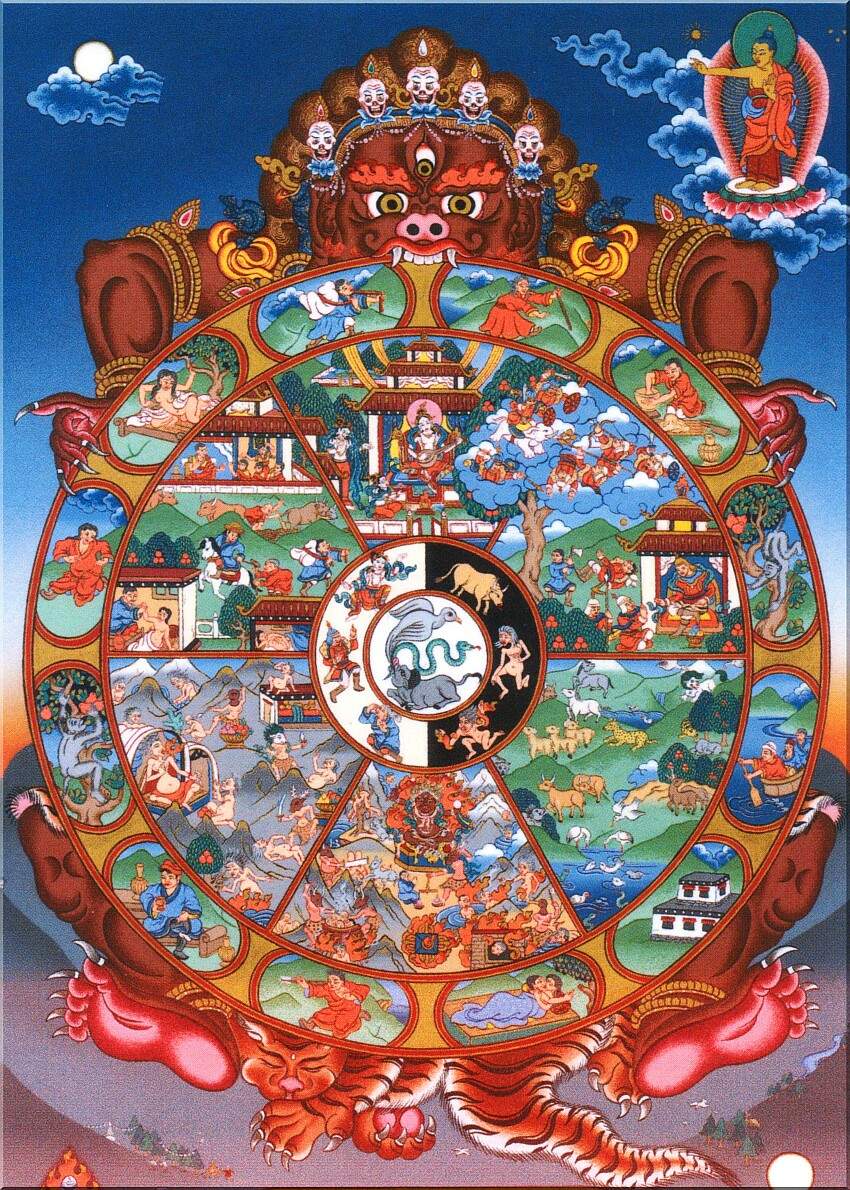
Buddhist Artwork Thangka of the Wheel of Life
The Buddhist Wheel of Life: Part 1 The wheel of life is held or supported by a wrathful deity that usually represents Yama, the god of death, but can also occasionally be interpreted as Mara, the god of seduction, or Srinpo, a mythical giant. The inner circle At the center of the wheel of life there is a smaller circle.

Pin on Buddha
bhava-cakra, (from Sanskrit: "wheel [ cakra] of becoming [ bhava ]") in Buddhism, a representation of the endless cycle of rebirths governed by the law of dependent origination ( pratītya-samutpāda ), shown as a wheel clutched by a monster, symbolizing impermanence. In the centre of the wheel are shown the three basic evils, symbolized by.

"The Wheel of Life" by Andy Weber. Wheel of life, Tibetan mandala
The Wheel of Life ( bhavachakra) is one of the most recognized images in Himalayan art, perhaps second only to the Buddha. Anyone who has travelled to Asia, the Himalayas, or other Tibetan cultural areas will know that the Wheel of Life is commonly seen as a mural on the outside entrance wall of almost every monastery or village temple.

WholesaleSarong Tibetan Buddhist thangka Wheel of Life Art
Dharma Wheel. In the dharmic religions (Hinduism, Buddhism and Jainism), the wheel of life (also called by a variety of other names; see the Names section below) is a mandala or symbolic representation of samsara, the continuous cycle of birth, life, death. One is liberated from this endless cycle of rebirth when bodhi, enlightenment, nirvana.
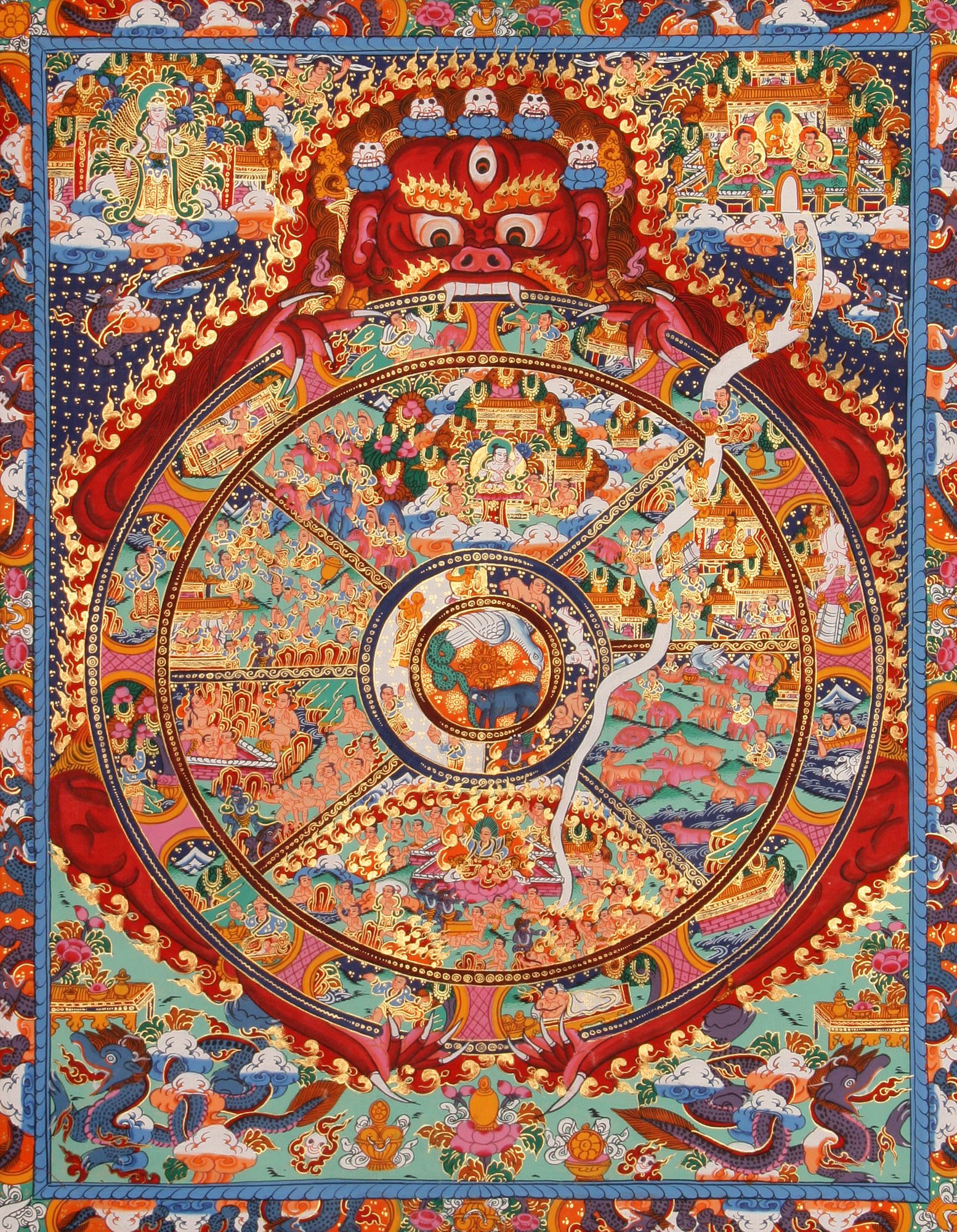
Tibetan Buddhist Wheel of Life
The Wheel of Life (called the Bhavachakra in Sanskrit) represents the cycle of birth and rebirth and existence in samsara. This gallery looks at different parts of the Wheel and explains what they mean. The main sections are the hub and the six "pie wedges" depicting the Six Realms.
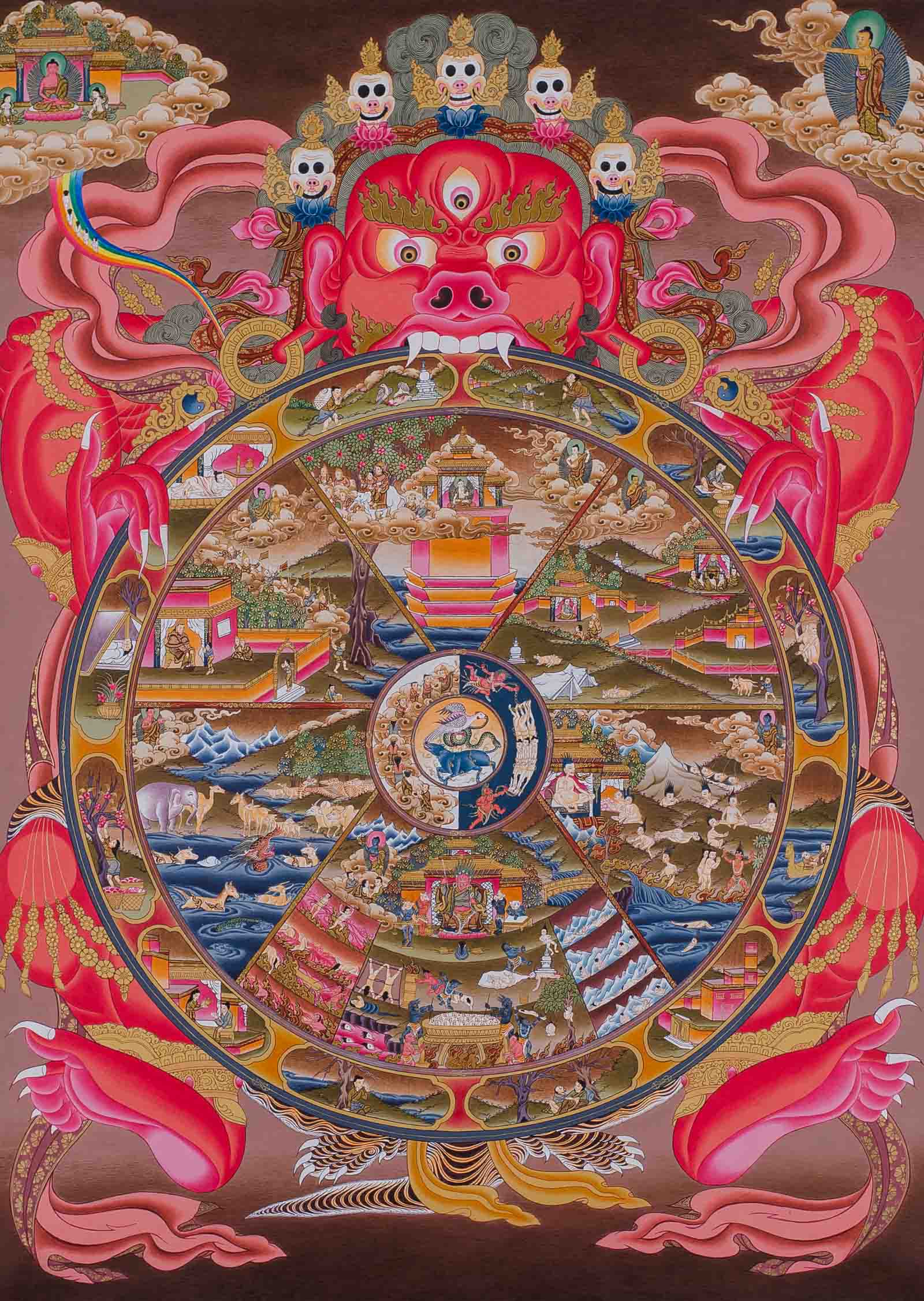
The Wheel of Life Samsara Thangka Mandala
The Wheel of Life (Skt. bhava-cakra )—or, as it is sometimes referred to, the Wheel of Becoming, the Wheel of Existence, the Wheel of Rebirth, or the Wheel of Reincarnation—is a visual representation of the Buddhist notion of death as inseparable from that of birth, portraying in concrete form abstract metaphysical concepts.
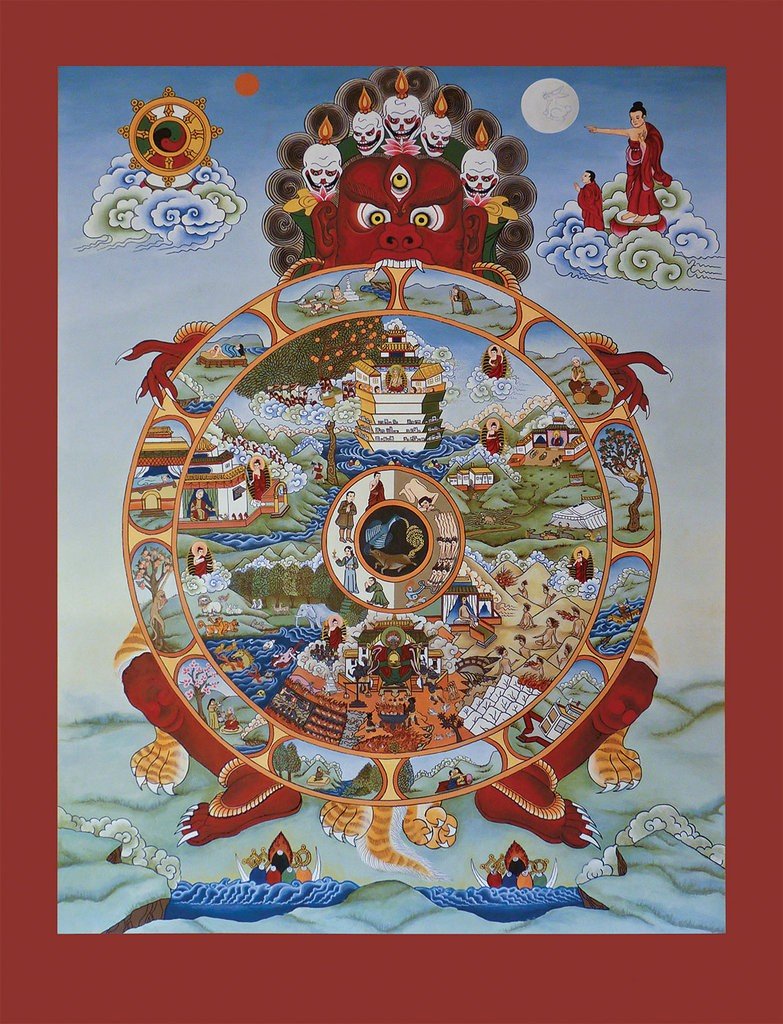
Tibetan Wheel of Life mapping our dilemma and its solutions Auckland
The Wheel of Life illustrates the essence of the Buddhist teachings, the Four Truths: the existence of earthly suffering, its origin and cause, the ending or.
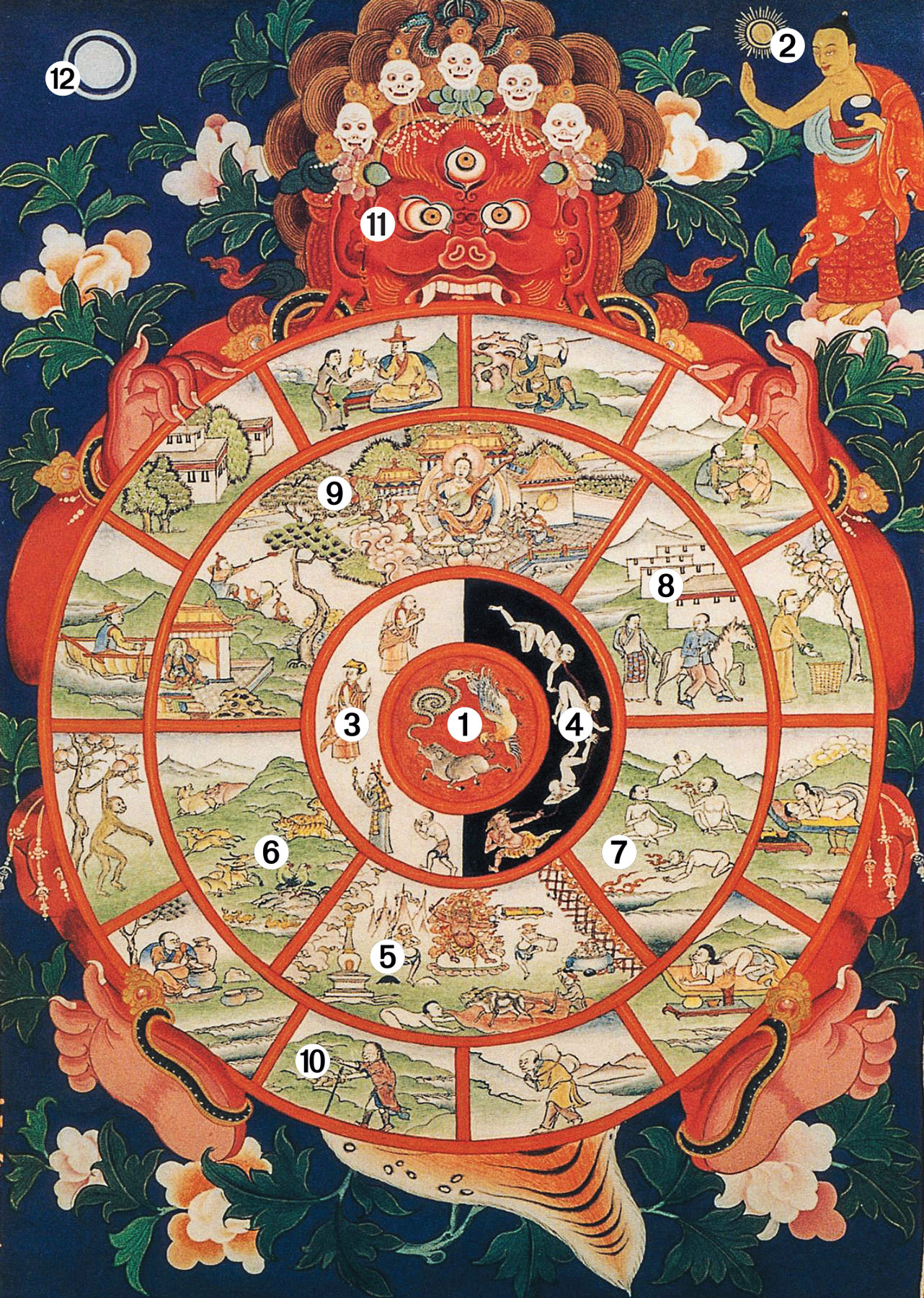
What’s in a Symbol? Bhavacakra Tricycle The Buddhist Review
Using the traditional Buddhist allegorical image of the Wheel of Life and the teaching of the twelve links of dependent origination, the Dalai Lama deftly illustrates how our existence, though fleeting and often full of woes, brims with the potential for peace and happiness. We can realize that potential by cultivating a wise appreciation of the interdependency of actions and experience, and.